

PEOPLE'S REPUBLIC OF CHINA - TAIWAN CRISIS
HISTORICAL OVERVIEW
This section provides the historical background associated with the current situation between the PRC and Taiwan. Issues such as the national security policies/objectives, political differences, alliances, and previous military confrontations are addressed in this section.
You will progress to the ACH Method section from the end of the “Current Relations” category
Chinese Civil War
War Against Japan
Post War - WWII
Nationalist Defeat
Hostilities
PRC Recognition
Current Relations
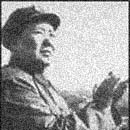
The Chinese Civil War
The Chinese Civil War began in 1927 when a coalition government between the Nationalist Kuomintang (KMT) and the Chinese Communist Party (CCP) was dissolved. Determined to eliminate the CCP as a political entity, Chiang Kai-shek launched a military offensive to place the country under KMT control. Chiang succeeded in bringing the eastern portion of China under his control and forced the communists led by Mao Tse Tung (right) to retreat into the Chinese interior.
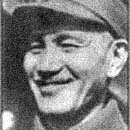
War Against Japan
After years of meddling in Chinese affairs, Japan sent the Kwantung Army into Manchuria and established the puppet state of Manchukuo with Puyi (the last emperor of the Qing dynasty) as emperor in 1932. Realizing a war against Japan was inevitable, Chiang Kai-Shek (left) was forced to enter into a "ceasefire" with the Communists in 1936. Although the KMT and CCP agreed to fight the Japanese together, the KMT (by virtue of possessing the eastern most portions of China) were forced to fight the Japanese without any significant assistance from the CCP. Without having to mount any large scale attacks against the Japanese, the CCP used this time to solidify their holdings and expand their army.
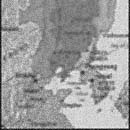
Post War - WWII China
Following the Japanese surrender in 1945, the KMT began a futile attempt to reassert control over Manchuria; however, with their industrial infrastructure in shambles and popular support firmly on the side of the communists, the KMT struggled to regain their pre-war status. With massive amounts of assistance from the US, Chiang was able to occupy portions of Manchuria. In order to support a settlement negotiated by General George C. Marshall, both Chiang and Mao agreed to reduce the size of their armies by nearly 1.5 million men. Whereas Chiang discharged soldiers loyal to the KMT, Mao used the opportunity to purge political opponents. Supported by large stashes of captured Japanese equipment, the CCP spent 1945-46 preparing for the resumption of hostilities.

The Nationalist Defeat
Unable to secure a lasting cease fire, General Marshal departed China in February 1947. Immediately afterwards, the Chinese Civil War entered into its final phase as the US backed KMT and Soviet backed CCP resumed fighting. With the majority of their support coming from the middle and upper classes, the KMT was unable to garner enough rural support to halt the CCP’s steady advance.
When coupled with the faltering economy and widespread corruption by KMT leaders, the tide of the war turned against the KMT as the CCP quickly consolidated their rural gains and began assaulting KMT urban strongholds. By mid-1949, the Nationalist cities of Beijing and Nanjing fell to the CCP as they extended their control to the Northern and eastern parts of the country. While still pursuing Nationalist forces in southern China, Mao proclaimed the People's Republic of China (with Beijing as its capital) on October 1st 1949. In order to avoid defeat, Chiang and his 600,000 man army fled to the island of Taiwan, and in December 1949 proclaimed the Republic of China with Taipei as its capital.

Continued Hostilities
With North Korea's invasion of South Korea in 1950, the conflict between the two China's took on added significance when the US adopted a policy of "containing" the communist threat. With increasing amounts of US military aid, the PRC and Taiwan spent the next 20 years engaged in a series of skirmishes intended to destabilize the opposing governments. With the PRC lacking an amphibious capability and Taiwan unable to mount anything more than coastal raids, sporadic fighting between the two sides continued unabated. In 1955, the US established a formal commitment to defend Taiwan when Congress passed the Formosa Resolutions Act. Later that year, a negotiated settlement between the two sides was reached when the KMT agreed to withdraw from the Dachen and Nanchi islands while the PLA agreed to stop bombarding Taiwanese islands. Along with the commitment to defend Taiwan, the US began equipping the KMT with modern fighters, missiles and naval vessels.
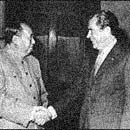
PRC Recognition
Despite a series of efforts by several members of Congress to oppose the measure, in October 1971 the United Nations adopted Resolution 2758 calling for the PRC to be recognized as the legitimate government of China. In February of 1972, the US and PRC released the Shanghai Communiqué calling for both countries to work together in order to normalize relations. In the communiqué, the US agreed to support the "One-China Policy" acknowledging there is only one China (although not necessarily the PRC). In 1978, President Jimmy Carter announced the US was normalizing relations with the PRC and would sever formal relations with Taiwan. In response to President Carter's action, Congress passed the Taiwan Relations Act calling for the US to consider any effort to determine the future of Taiwan by other than peaceful means (including boycotts and embargoes) as a threat to the peace and security of the Pacific and of grave concern to the US and made formal provisions for providing Taiwan with weapons "of a defensive nature."
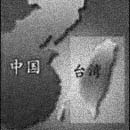
Current PRC - Taiwan Relations
Beginning in the 1990's, relations between the PRC and Taiwan improved with a few notable exceptions. In 1992, Taiwan’s President Lee Teng-hui indicated he would no longer challenge the right of the PRC to rule the mainland, thereby shifting the debate to which nation had legitimacy overt Taiwan. In an attempt to intimidate the Taiwanese people into voting against Lee Teng-hui (whom the PRC characterized as a candidate attempting to "divide the motherland"), the PRC fired several missiles inside of Taiwan's territorial waters during the 1996 Presidential elections. In order to prevent the crisis from escalating into a war, the US dispatched two carrier battle groups to Taiwan Straits as a show of resolve. As a reminder to Taiwan and the US, the PRC passed the Anti-Cessation Law formalizing their long standing policy to use "non-peaceful means" against the "Taiwan independence movement" should Taiwan declare their independence. Despite the tenuous situation regarding the status of Taiwan, the PRC and Taiwan have significantly increased economic and cultural ties as both nations' economies have experienced tremendous growth.
